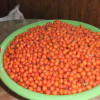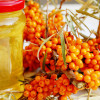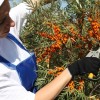Planting and caring for sea buckthorn: detailed instructions
Content
Description
Even in the field of traditional medicine of Ancient Greece, this amazing berry was widely used as an effective remedy for the treatment of diseases of people and horses. Over time, its healing properties were forgotten for a long time and undeservedly. But in recent years, sea buckthorn has again become one of the most popular crops in domestic gardens. The scientific name of the plant can be translated from Greek as "shine for horses". This is due to the fact that the animals that consumed the leaves of the culture, the skin became with a beautiful satin tint. Planting sea buckthorn and its cultivation on the territory of our country has been practiced for a long time. But we can talk about the appearance of high-quality varietal plants only since the 30s.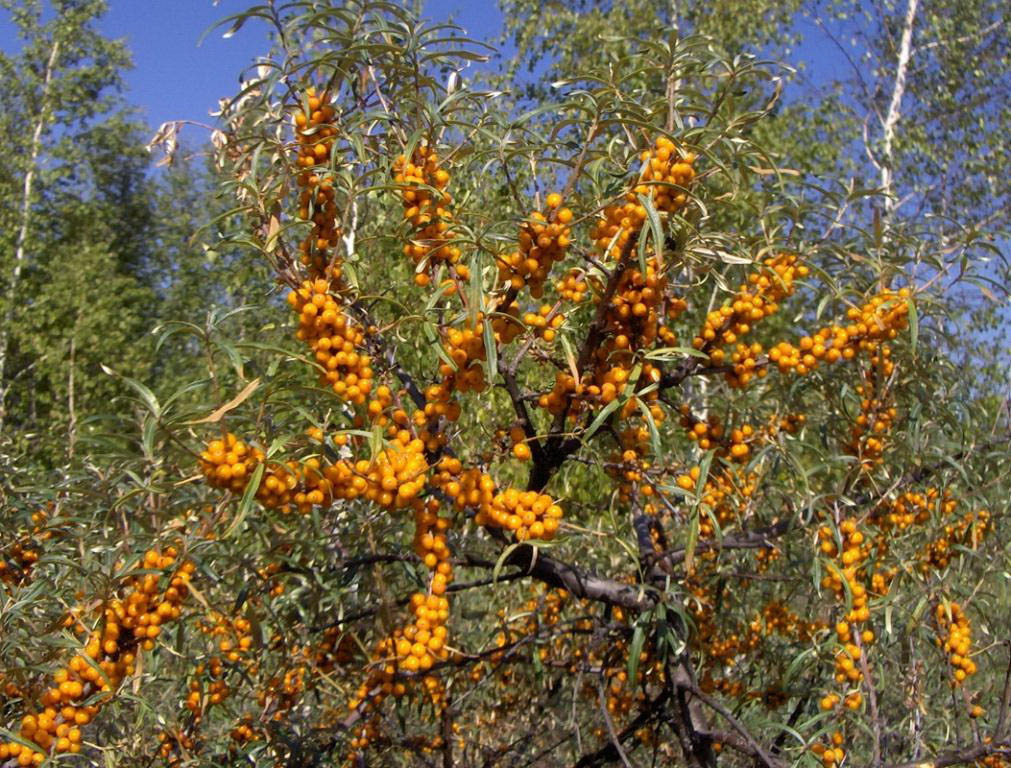
Externally, sea buckthorn is a small tree or a shrub-shaped plant, the height of which varies between 10 cm - 6 meters. Experts define the type of its root system as superficial. Most often, the roots are located at a depth of 40 cm. It has characteristic long and rather narrow leaves, which are colored green at the top of the plate and silvery-whitish, as well as reddish-golden. Starting from stellate scales at the bottom.
Almost simultaneously with the leaves, nondescript-looking unisexual flowers open. Sea buckthorn is a dioecious culture. This concept means that she has both male and female flowers. While male specimens are always silver-brown, female specimens can be distinguished by their yellow color. The fruits are traditionally in the form of false drupes in the form of a ball or elongated. They consist of a nut and a receptacle colored red or orange. The berries ripen for up to 100 days.
The main value is the oil extracted from the berries, which helps in the treatment of many ailments. The processing of sea buckthorn is carried out, it is customary to make delicious juice and jam from the fruits. Culture has received from nature the ability to withstand severe frosts (up to -50 degrees). The roots are able to respond normally to indicators up to -20.
Since female and male flowers are often located on different shrubs, sea buckthorn does not like to grow apart from other crops. It is difficult to determine the sex of a young bush. You should wait for the formation of flower buds. When does sea buckthorn ripen? This question is often asked by gardeners with little practical experience. When 4-6 years have passed since planting, the gardener will be able to enjoy tasty and healthy berries for the first time.
Video "Useful properties"
From the video you will learn about the beneficial properties of sea buckthorn.
Landing
How to plant sea buckthorn? This question worries not only novice summer residents. Usually, planting is planned for autumn or spring. As practice shows, any bush planted in the spring takes root better. Usually the plant has several roots. Under the ground, they are always placed in different directions and are located at a depth of about 50 cm.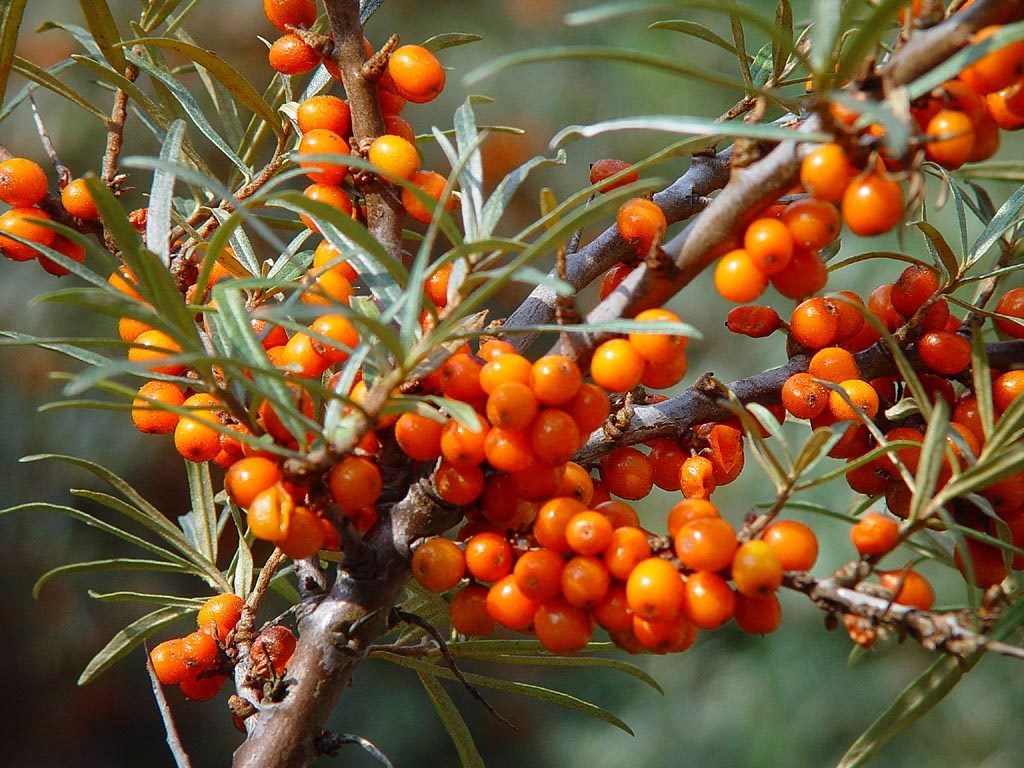
The root system of the culture does not like digging and possible mechanical damage.When choosing a landing site, you should give preference to neutral ground located in an open area with sufficient lighting.
Experienced gardeners know how to properly plant sea buckthorn. They add humus to each well as an organic top dressing and double superphosphate as an excellent mineral fertilizer. You can prepare this potting soil just before planting. It is also recommended to add wood ash there.
And how to plant correctly? The procedure for planting this plant in a chosen place is not much different from planting most of the fruit crops. You need to dig a hole, the depth and diameter of which will be 50 cm. Make sure that the root collar is located at ground level. It is ideal to plant at a distance of at least 1 meter from the border of the site. The rows between the bushes should be 2 by 2 meters.  At the bottom of the pit, it is advised to place shell rock, crushed stone, broken brick, the layer of which usually does not exceed 10 cm. This is followed by a layer of fertile soil and fertilizer. A young seedling should not be less than 2 years old. When planting it, do not forget to place a stake in the hole so that the trunk does not bend over time. After creating a hole in a chosen place and planting a bush, sprinkle it with earth. Next, watering is carried out at the very base.
At the bottom of the pit, it is advised to place shell rock, crushed stone, broken brick, the layer of which usually does not exceed 10 cm. This is followed by a layer of fertile soil and fertilizer. A young seedling should not be less than 2 years old. When planting it, do not forget to place a stake in the hole so that the trunk does not bend over time. After creating a hole in a chosen place and planting a bush, sprinkle it with earth. Next, watering is carried out at the very base.
Care
Now you know how to plant sea buckthorn. Some knowledge and skills are required in order for sea buckthorn, planting and caring for which, you will carry out yourself, to please with a bountiful harvest. The trees are sanitized in the spring. With the arrival of heat, it is required to cut off all diseased, dry, broken and non-viable branches. In April, it is recommended to loosen the soil in the near-trunk circles and aisles.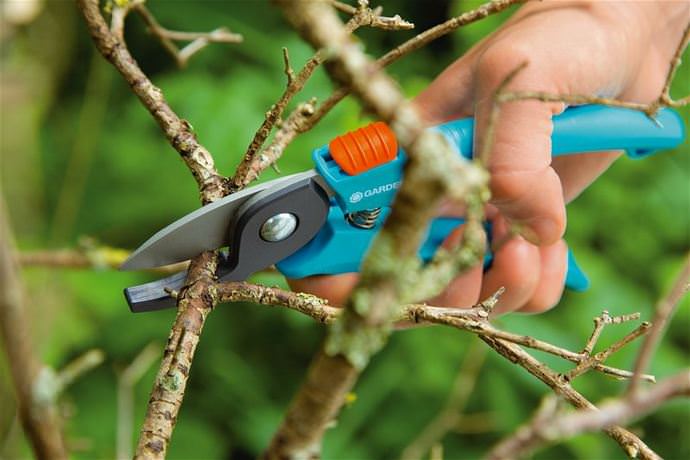
Watering is usually done in May. You can wait with it if there was a lot of snow in winter and heavy rains in spring. If there is calm weather at the time of flowering of the plant. Additional pollination should be carried out. To do this, cut a branch from a male tree and shake it over the crown of a female tree.
Activities aimed at stimulating the growth of fruits and shoots as much as possible can be combined into summer sea buckthorn care. An optimal water balance in the soil structure should be maintained. A day after watering, the soil should be loosened in the near-trunk circles and aisles. Fruit ripening occurs in August - September. Harvesting is carried out when the berries acquire their characteristic size and color.
Autumn care involves the obligatory pruning of the bushes, which is called sanitary. It is recommended to rejuvenate mature plants gradually annually, that is, in turn. If there are too dry days in the fall, it is recommended to water the plants abundantly. It also requires the application of fertilizers with a high content of phosphorus and organic matter.
Preventive treatment for diseases and pests involves collecting fallen leaves, collecting the remains of flowers and fruits from trees, cleaning wounds found on the surface of trunks and branches. They need to be treated with a solution of copper sulfate, then whitewash the stem and skeletal branches. It perfectly helps to prevent the invasion of pests and the appearance of fungi, treating the tree with a solution of urea or Bordeaux liquid 2 times per season. It is advised to do this in early spring and late autumn. If pests do appear, treat once a week with a solution of wood ash.
Growing and caring is primarily about watering. Practice shows that 3 - 4 buckets of water will be enough for a young plant, for a mature plant - from 6 to 8 buckets. The consumption for each tree increases one and a half times with the onset of autumn. Winter watering is also very important. Do not forget about loosening the earth. In order not to damage the roots in the process, it is better to create mulch from compost - from potato tops, birch leaves or apple trees, humus. They should be poured into the trunk circles.
Starting from 3 years of growth, the plant needs potash, phosphorus fertilizing, as well as ammonium nitrate. A mature tree after flowering, and then 1 more time after 3 weeks should be treated with a solution of 1 spoon of liquid potassium humate or Effekton in 10 liters of water. At a time when the ovaries are growing intensively, a solution of double superphosphate is introduced in the amount of 2 tablespoons and the same amount of the Universal-micro mixture, 1 tablespoon of potassium sulfate. All components must be mixed in 10 liters of water. In the process of digging in the fall, it is necessary to distribute 30 grams of superphosphate, 25 grams of potash salt and 100 grams of wood ash per square meter over the area.
Pruning
Sea buckthorn pruning can be done in spring, summer or fall. In autumn days, sanitary pruning of trees is carried out. In the spring, sick, dry, broken shoots and branches are subject to removal. Young plants need formative pruning. If you want to form a plant like a bush, you need to cut the seedling at a height of 10 - 20 cm. If you want to get a tree, form it with a stem, the height of which will be 30 cm, leaving 2 - 4 skeletal branches. Further formation of both the bush and the tree involves pruning certain shoots and overgrowths.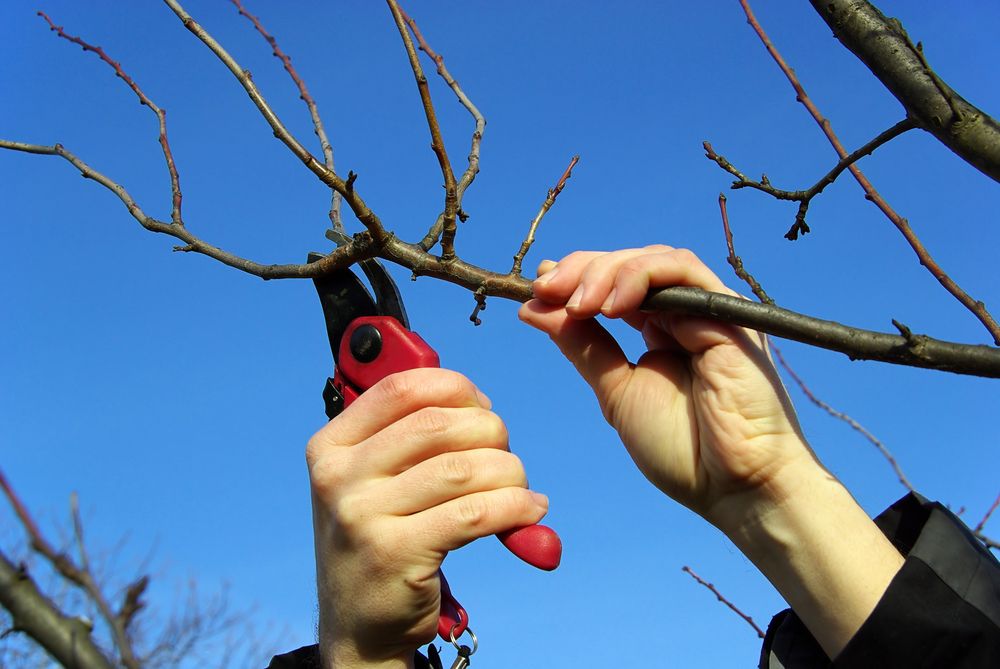
When pruning is already 6 years old, you need to carry out in the spring a rejuvenating pruning of branches that have ceased to bear fruit. It is necessary to replace 1 - 3 branches every year. If suddenly the tree has not survived the frost, you should cut it down and start forming a new plant. In late autumn, it is advised to get rid of sick and improperly growing branches, as well as shoots.
Reproduction
Reproduction can be done in various ways. This is done by seeds, and by cuttings, and by grafting, and by dividing the bush, and by shoots, and by layering.
With the help of seeds, it is customary to breed new varieties of plants. Also, seedlings are used as a stock. Seed material does not lose its germination capacity for several years. Seeds should be sown shallow at the end of April. Germination is carried out in a warm place with a set under glass. Seedlings should be expected in a couple of weeks. At first, they are shaded from the sun. You can transplant to a permanent place in mid-June.
Cutting involves the use of shoots. Harvesting is carried out in late November - early December. Cutting is best done with two-year increments having a thickness of about 6 cm. The segments are usually up to 20 cm long. They are wrapped in a cloth, bag, buried in a hole and covered with snow. Green cuttings are more difficult to root. They require the selection of a sterile and sufficiently loose soil mixture with a layer of sand, root formation stimulants, moisture spraying, and so on.
Reproduction by layering is suitable if there is a young tree or bush with branches on the site that bend normally. In the spring, they should be bent into the groove, secured and sprinkled with soil. Don't forget to water, fertilize, loosen and remove weeds. The next spring, the scion is separated from the parent culture along with the roots and placed on a permanent site.
For reproduction by shoots, shoots are used that are located further one and a half meters from the parent culture. During the season, the shoot should be spud, watered, and fertilized. And plant it in the spring.
When dividing a bush, they dig it up, cut off the old branches. For division, a pruner is used. Each part must have a developed root system and shoots. After processing the sections with crushed coal, they are planted in the holes.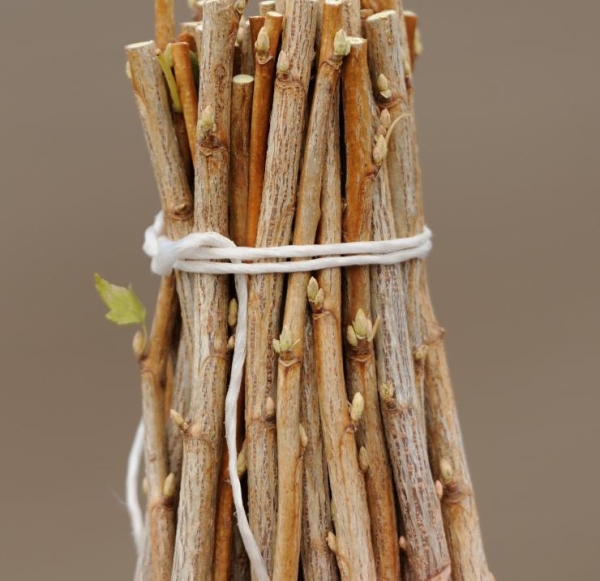
Vaccination is the most time consuming method. Usually in April - May, the male process is grafted to the female one. The trunk of a two-year-old seedling is cut off above the root collar for reverse growth by a couple of centimeters. The rootstock should have a developed shoot about 10 cm in size.Over the summer, it is grown and pinched. In the third spring, cuttings are copulated at a height of up to 10 cm.
Diseases and pests
Among the common diseases of sea buckthorn can be called endomycosis.Usually, signs of such a fungal infection are found on fruits in early August. They become filled with gray mucus. The causes of the appearance are considered to be rain and dew. Treatment consists of treatment with copper oxychloride or Bordeaux liquid.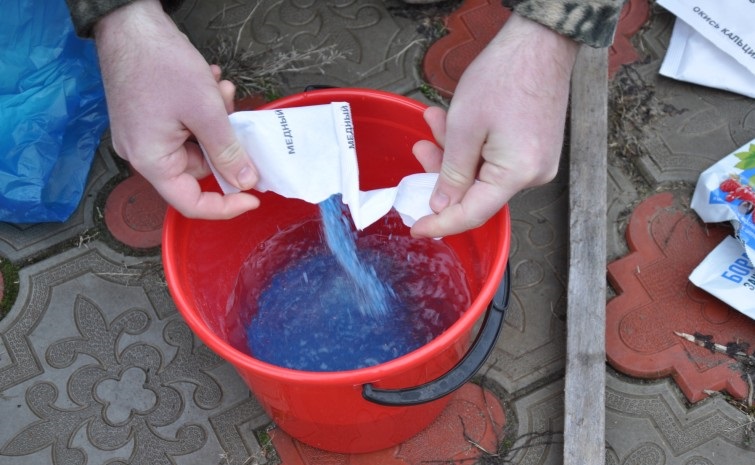
Black cancer is characterized by the presence of round spots on the branches. The causative agent of the infection enters the plant through wounds obtained during pruning or frostbite. Treatment is carried out by treatment with copper sulfate, then clay with mullein is used.
The black leg affects the stems of young seedlings. In order to prevent them, they are watered with a solution of potassium permanganate every couple of days. Treatment is carried out with a solution of potassium permanganate daily.
Scab, or stegmina, is a fungal infection, the result of which is the drying of the shoots and the entire tree. For prevention, it is advised to carry out sanitary pruning and processing with Bordeaux liquid 20 days before the planned harvest.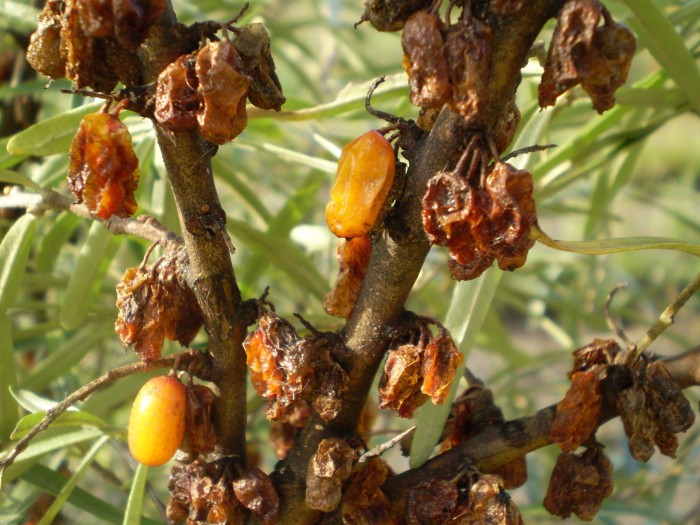
The plant in July can lie in wait for danger in the form of gray, as well as brown rot. The reason for this unpleasant phenomenon is considered to be rainy weather. When treating diseased crops, they must be cut out and burned. Prevention consists in timely watering, loosening and top dressing.
Among the pests of the culture, the sea buckthorn moth is found. This caterpillar eats up the kidneys at the time of swelling. The solution of "Karbofos" helps against it. The sea buckthorn fly can rob you of your harvest altogether. She appears in June. Fly larvae prefer to feed on the juicy pulp inside the berries. Chlorophos works effectively against the pest. Aphids love to suck sap from foliage and shoots. The treatment with "Karbofos" during the opening of the leaves helps.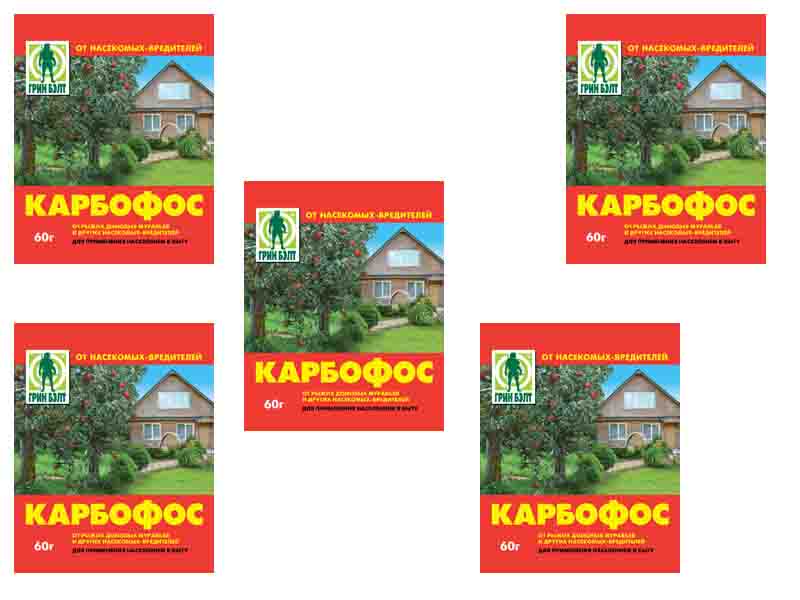
The gall mite, which often spoils the appearance and harms the health of the culture, also prefers to eat juice. They fight against him as well as against aphids.
Types and varieties
How to grow a quality and healthy favorite crop? To do this, choose a good variety. There are two types of sea buckthorn - buckthorn, found in Europe, and willow, which grows in the south of Xinjiang in China, in the mountains of India, Nepal, Bhutan.
Willow is a tree about 15 cm high with sharp leaves up to 8 cm long and about 1.5 cm wide, colored red-brown. The fruit is a yellow and round drupe about 7 mm in size. Buckthorn is also Siberian, European, small-fruited, large-fruited, thornless, thorny in terms of variety, with early, medium or late ripening of fruits.
Naran, Moscow beauty, Solnechnaya, Giant - this is not a complete list of the best varieties of sea buckthorn.
Naran ripens quite early. Differs in large orange berries. The yield is normally up to 10 kg per bush. The variety grows well in the middle zone of our country.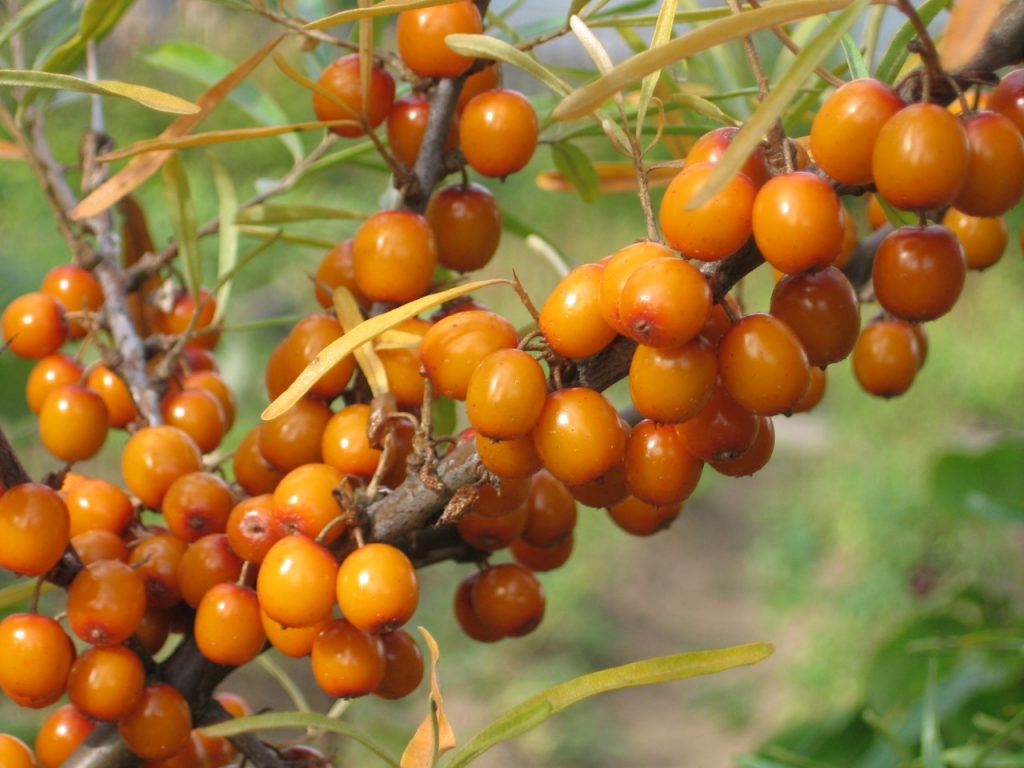
The Moscow beauty matures in the medium term. The fruits are orange-red in color, medium in size, with a not too pronounced odor and a slight sourness. The yield is up to 12 kg per bush. There are few thorns on the plant. Possesses good transportability. Also well suited for growing in the middle lane.
Sunny has a medium ripening period, large light orange fruits that are sour. The plant is covered with thorns in a medium degree, has a yield of up to 15 kg per bush, adapted for the middle lane.
The giant belongs to late-ripening varieties. It has large, cylindrical, orange-colored fruits. No thorns are observed on the plant. The variety is suitable for growing in the Urals and the Far East.
Cultivation and Care Video
From the video you will learn how to effectively grow and care for sea buckthorn.

